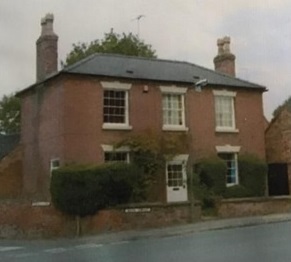Welcome to the Repton Village History Group.
Here you will find a description of the RVHG, including a brief outline of the activities of the group and details of many of the interesting historical facts associated with this ancient community.
Click here for the latest articles and website updates: Latest News
WHEN REPTON HAD A PICTURE HOUSE
Ivor Sanders wrote the following article which appeared in the Village News:
It had no plush upholstered swing back seats. It had no balcony. There was no popcorn, and no ice- cream interval. It had hard wooden forms. It had a double sink which would be occupied by two people when all the forms and chairs were filled. Those arriving late would stand at the back. No one complained, no one minded. The fact that it was a film show was sheer luxury.
In 1940, Arthur Todd, with Wilfred Pearson, formed the Repton Film Society, with the aim of providing entertainment for the many evacuees from Birmingham and London, and for the village. Film shows were held every Saturday afternoon and evening in the Schoolroom of the Congregational Church (now United Reformed Church) in Pinfold Lane, and continued until 1953. I believe it was 4d (old money) in the afternoon, and sixpence in the evening. In the early years they were silent films, with Charlie Chaplin, Buster Keaton, the Keystone Cops, Charlie Chase, and many others. Later, talkies were introduced and included westerns with Hopalong Cassidy, Tex Ritter; dramas, and comedy films with Laurel and Hardy, and Abbot and Costello. Every Christmas, A Christmas Carol with Alastair Sim as Scrooge would be shown. There was also a 15 week serial called The Brass Bullet, and
films of Dick Barton Special Agent.
In those early years, Arthur and Wilfred would borrow the blacksmith’s handcart and walk to Willington and back on Thursday evenings, after work, to collect the film canisters from Willington Station. On Friday evenings they would try out a couple of reels, letting us lads who were hanging about outside, in for a part pre-viewing.
Arthur was a deacon, organist and lay preacher at the Congregational Church, and lived at The Manse at the corner of the Square and Main Street next to the blacksmith’s (now a hairdressers). He would display a notice on his gate saying which films would be shown on the next Saturday.


The Schoolroom was built in 1845 attached to the then Independent Chapel (later Congregational Church and now United Reformed Church). Since it’s inception it has been used for church and Sunday School, a meeting place for some village organisations, youth activities, play groups, parties, and many other activities. It housed a British day school which had one female teacher. Later it was used by the National Church of England School in High Street (now the Art School) for cookery lessons as the Schoolroom had a large double oven cooking stove. Water had to be brought in as tap water was not installed until the late 1950s. The Schoolroom is still widely used today, but perhaps it’s greatest moments were when it was “over” filled to capacity with evacuees and children and adults from Repton and neighbouring areas for those Saturday film shows which brought so much pleasure to so many during those dark war time days and the years of austerity which followed, thanks to the initiative and commitment of Arthur Todd.
Ivor Sander 2023.
